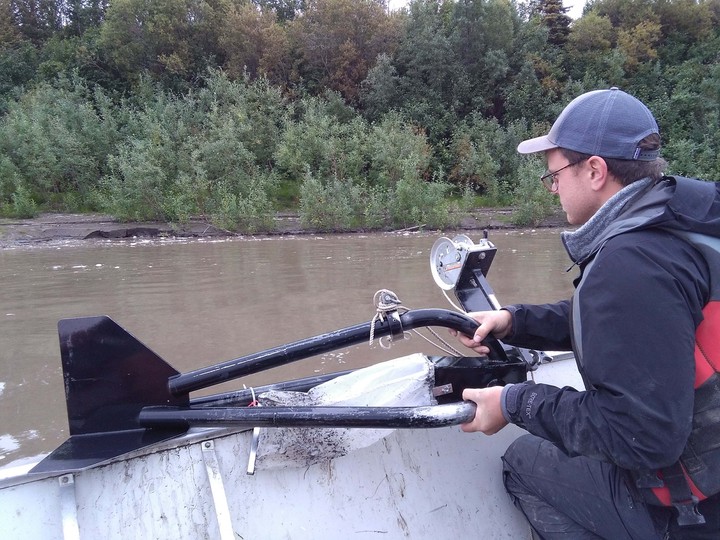How do ferry landings impact water quality and fishing in major northern rivers?
 Matt Teillet sampling on the Mackenzie River
Matt Teillet sampling on the Mackenzie River
Anthropogenic additions of fine sediment to lotic systems can have adverse effects on water quality and downstream biota. The addition of gravel sediment to build ferry landings on the Peel and Mackenzie Rivers has been an ongoing concern for the Gwich’in communities of Fort McPherson and Tsiigehtchic that depend on the rivers for their food and livelihoods. Specifically, there are concerns that granular material from ferry landings is degrading water quality, harming fishing opportunities, and altering river morphology downstream. Previous reports concluded that ferry operations were not impacting downstream ecology. However, past studies had methodological shortcomings and community concern about the ferry landings remain. To study the impact of the granular ferry landings on water quality, we will collect water quality and sediment samples over two field seasons in 2018 and 2019. At each site, we will collect depth-integrated samples of the water column, bed load samples, substrate sediments, and benthic macroinvertebrates. Our team will also update Traditional Knowledge records in Fort McPherson and Tsiigehtchic through interviews and community meetings to examine changes in the river ecosystems and impacts of the ferry landings on fishing opportunities.
Associated students: Matthew Teillet, Thomas Pretty
Collaborators: Dr. Alex Latta (Wilfrid Laurier)
Funding: Northwest Territories Department of Infrastructure